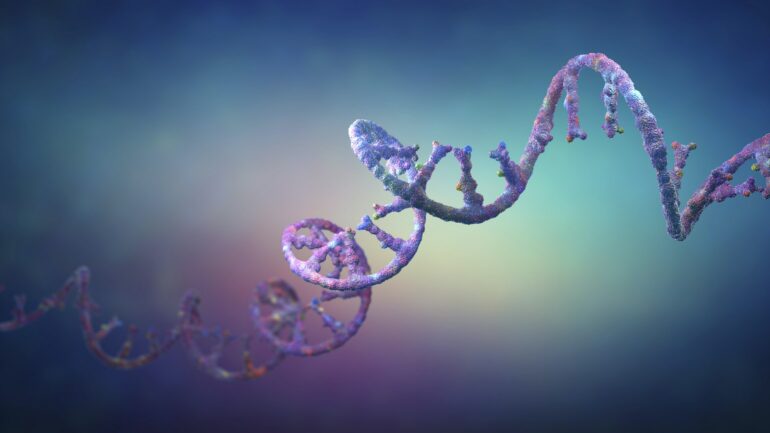Before 2020, when my friends and acquaintances asked me what I study as a molecular biologist, their eyes would inevitably glaze over as soon as I said “RNA.” Now, as the COVID-19 pandemic has shown the power and promise of this molecule to the world at large, their eyes widen.
Despite growing recognition of the importance of RNA, how these molecules get to where they need to be within cells remains largely a mystery.
RNA is a chemical cousin of DNA. It plays many roles in the cell, but perhaps it’s most well-known as the relay messenger of genetic information. RNA takes a copy of the information in DNA from its storehouse in the nucleus to sites in the cell where this information is decoded to create the building blocks – proteins – that make cells what they are. This transport process is critical for animal development, and its dysfunction is linked to a variety of genetic diseases in people.
In some ways, cells are like cities, with proteins carrying out specific functions in the “districts” they occupy. Having the right components at the right time and place is essential.
For example, it makes little sense to put a high-security vault in the fashion district. Instead, it needs to be in the financial district, where there are tellers to fill it with currency. Similarly, proteins devoted to energy production for the cell are most functional not when they are confined to the nucleus but when they are in the cell’s power plant, the mitochondria, surrounded by the raw materials and accessories needed for their job.
The inside of a cell is much like a city.
So how do cells ensure the millions of proteins they contain are where they are supposed to be? One way is as simple as it sounds: transport them directly. However, every transport step costs energy. Dragging a heavy vault across town isn’t easy. An alternative strategy is to instead take the instructions for making the vault directly to the bank so it’s already in the correct location immediately after construction.
The instructions for making a given protein are contained within RNA. One way to ensure proteins are where they are supposed to be is to transport their RNA blueprint to where their specific functions are needed. But how does RNA get where it needs to be?
My research team focuses on this very question: What are the molecular mechanisms that control RNA transport? Our recently published research hints that some of the molecular language governing this process may be universal across all cell types.
The molecular language of RNA transport
For a handful of mRNAs – or RNA sequences coding for specific proteins – researchers have an idea about how they’re transported. They often contain a particular string of nucleotides, the chemical building blocks that make up RNA, that tell cells about their desired destination. These sequences of nucleotides, or what scientists refer…
